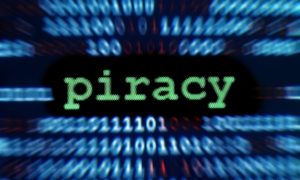Enterprise archiving is no longer just about storage. It’s become the backbone of modern business operations, handling everything from regulatory compliance to disaster recovery capabilities. When I speak with enterprise businesses, they’re often overwhelmed by the sheer number of archive platforms available on the market.
The stakes are higher than ever. One wrong choice could cost your organization millions in compliance fines or leave you scrambling during an audit. That’s why understanding the key considerations for selecting an enterprise archive platform has never been more critical.
This comprehensive guide covers the top 10 essential factors you need to evaluate. We’ll explore scalability requirements, security measures, and the total cost of ownership that many organizations overlook. By the end, you’ll have a clear roadmap for making this crucial decision.
Scalability and Performance
Your archive platform needs to grow with your business, not hinder it. I’ve seen too many companies make the mistake of choosing solutions that work perfectly for their current needs but fail to meet future demands.
Performance isn’t just about storage space – it’s about how quickly your teams can access archived data. Sales teams need instant access to historical communications. Legal teams require fast retrieval during discovery processes. The platform you choose should be able to handle these demands without breaking a sweat.
Consider this: a mid-sized financial firm I worked with processed 50TB of data annually. Within three years, they were handling 200 TB. Their original platform couldn’t scale, forcing them into an expensive migration that could have been avoided with proper planning and preparation.
Look for platforms that offer horizontal scaling capabilities. Cloud-based solutions often provide this flexibility, allowing you to add resources as needed without major infrastructure overhauls.
Integration Capabilities

Your archive platform doesn’t exist in isolation. It needs to integrate seamlessly with your existing ecosystem of software solutions, ranging from email systems to enterprise collaboration platforms.
The best platforms offer robust APIs and pre-built connectors for popular enterprise applications. Microsoft 365, Google Workspace, and Salesforce – these integrations shouldn’t require manual intervention or extensive custom development.
I recently assisted a manufacturing company in evaluating its options. They had invested heavily in a custom Enterprise Vault setup, but it couldn’t integrate with their new CRM system. The lack of integration forced them to maintain multiple archive platforms, resulting in a doubling of their operational costs.
Modern unified platforms eliminate these headaches. They provide seamless integration across your entire technology stack, creating a single source of truth for all archived information.
Security Measures
Data breaches make headlines daily, and archived data are often prime targets for cybercriminals. Your enterprise archive platform must provide robust security measures that protect sensitive information both at rest and in transit.
Look for platforms that offer multiple layers of security. Encryption should be a standard, not an optional feature. Access controls must be granular, enabling you to define precisely who can access what information and under what specific circumstances.
The most effective solutions provide comprehensive audit trails that track every user activity. When regulators come knocking, you’ll have detailed logs showing exactly who accessed what data and when. This level of transparency provides peace of mind and demonstrates your commitment to data governance.
Consider platforms that offer advanced features, such as data loss prevention and automated threat detection. These tools add an extra layer of protection against both external threats and insider risks.
Compliance Adherence
Regulatory requirements vary by industry, but the consequences of non-compliance are universally severe. Your archive platform must support the specific regulations that govern your business operations.
Financial services firms need to comply with SEC and FINRA requirements. Healthcare organizations must adhere to HIPAA standards. Manufacturing companies face EPA regulations. Each industry has unique requirements for data retention, access, and disposal.
The platform you choose should automate compliance processes wherever possible. Manual compliance management is prone to errors and is resource-intensive. Look for solutions that automatically apply retention policies, generate compliance reports, and flag potential violations before they become problems.
Some platforms offer specialized compliance modules for specific industries. Proofpoint Enterprise Archive, for instance, offers tailored solutions for the financial services industry. These industry-specific features can significantly reduce your compliance burden.
Ecosystem and Support
The relationship with your archive platform vendor extends far beyond the initial purchase. You need a partner who will support your organization through implementations, upgrades, and inevitable challenges.
Evaluate the vendor’s track record with enterprise businesses. How quickly do they respond to support requests? What kind of training and documentation do they provide? These factors directly impact your user experience and operational efficiency.
Look for vendors that offer comprehensive documentation and active user communities. When your team encounters issues, they need quick access to solutions. Platforms with robust ecosystems provide multiple channels for getting help.
Consider the vendor’s development roadmap. Archive platforms evolve rapidly, and you want a partner who’s investing in future capabilities rather than maintaining legacy systems.
Total Cost of Ownership
Storage costs are just the tip of the iceberg when it comes to expenses for an archive platform. The true total cost of ownership includes implementation, training, ongoing maintenance, and potential migration costs.
Many organizations focus solely on the monthly per-user pricing without considering hidden costs. Custom pricing models can vary significantly between vendors, making direct comparisons challenging. Always request detailed pricing breakdowns that include all potential fees.
Don’t forget about the cost of downtime. If your archive platform experiences outages, what will be the cost to your business? Factor in the potential impact on productivity and compliance when evaluating different options.
Cloud services often provide better cost predictability than on-premises solutions. However, data egress fees and premium support charges can quickly add up. Ensure you understand the complete cost structure before making any commitments.
Information Governance
Effective information governance goes beyond simple data storage. Your archive platform should support comprehensive policies that govern how information is classified, retained, and eventually disposed of.
Look for platforms that allow you to define custom retention policies based on various criteria. Some documents must be retained for seven years, while others are required to be kept for decades. The system should automatically apply the appropriate policies without requiring constant manual oversight.
Advanced search capabilities are crucial for information governance. Your teams need to quickly locate specific documents or communications during legal proceedings or internal investigations. Full-text search across multiple file formats should be standard functionality.
The platform should also support litigation holds and eDiscovery processes. When legal teams need to preserve specific information, the system should facilitate this process in a straightforward and auditable manner.
Data Management Features
Modern archive platforms offer sophisticated data management features that go far beyond basic storage. These capabilities can significantly impact your operational efficiency and user satisfaction.
Intelligent data classification helps organize information automatically. Instead of relying on users to properly categorize documents, the system uses machine learning to identify and tag content based on its characteristics and context.
Deduplication features reduce storage requirements by eliminating redundant copies of identical files. This not only saves money but also improves search performance and simplifies data management.
Look for platforms that offer flexible support for various file formats. Your organization likely works with dozens of different file types, and the archive platform should preserve the original format while providing conversion capabilities when needed.
Tool Evaluation
The evaluation process for enterprise archive platforms requires a systematic approach. Don’t rely solely on vendor presentations or marketing materials. Hands-on testing reveals capabilities and limitations that aren’t apparent in sales demos.
Create a comprehensive evaluation matrix that weighs each consideration based on your organization’s priorities. Scalability might be your top concern, while another organization prioritizes integration capabilities.
Involve representatives from all affected departments in the evaluation process. IT teams focus on technical requirements, but end users care about interface design and search functionality. Legal teams require specific compliance features that may not be readily apparent to technical evaluators.
Consider running pilot projects with your top candidates. Real-world testing with actual data provides insights that theoretical evaluations cannot match.
Real-Time Archiving

Traditional archive systems operate on scheduled batches, creating gaps between data creation and archival. Real-time archiving eliminates these delays, ensuring that all information is immediately protected and accessible.
This capability is significant for compliance-sensitive communications. Email messages, instant messages, and social media posts need to be captured and archived as they occur, not hours or days later.
Real-time capabilities also improve disaster recovery. If your primary systems fail, archived data remains current and accessible. This reduces recovery time objectives and minimizes potential data loss.
Modern platforms achieve real-time archiving through continuous data streaming and incremental backup processes. These approaches minimize the impact on system performance while ensuring comprehensive data capture.
Conclusion
Selecting the right enterprise archive platform requires careful consideration of multiple factors. Scalability ensures the solution grows with your business. Integration capabilities prevent operational silos. Security measures protect sensitive information from ever-evolving threats.
The decision you make today will have a lasting impact on your organization for years to come. Take the time to evaluate each consideration against your specific requirements thoroughly. Don’t rush the process – the cost of getting it wrong far exceeds the investment in proper evaluation.
Remember that the cheapest option rarely provides the best value. Focus on the total cost of ownership and long-term capabilities rather than initial price tags. Your future self will thank you for making a thoughtful, comprehensive decision.
ALSO READ: What are the Benefits of the Communications Archive?
FAQs
Compliance adherence is typically the most vital factor, as regulatory violations can result in severe financial penalties and legal consequences.
Costs vary widely based on data volume and requirements; however, organizations should budget $5-$ 15 per user per month for comprehensive solutions.
Yes, modern platforms offer extensive integration capabilities through APIs and pre-built connectors for popular enterprise applications.
Implementation timeframes range from 3 to 6 months for standard deployments to 12 months or more for complex, highly customized solutions.
Cloud solutions offer better scalability and lower upfront costs, while on-premises solutions provide greater control over data and security configurations.




